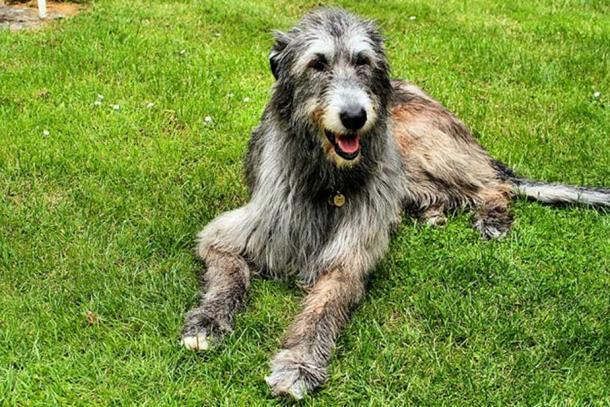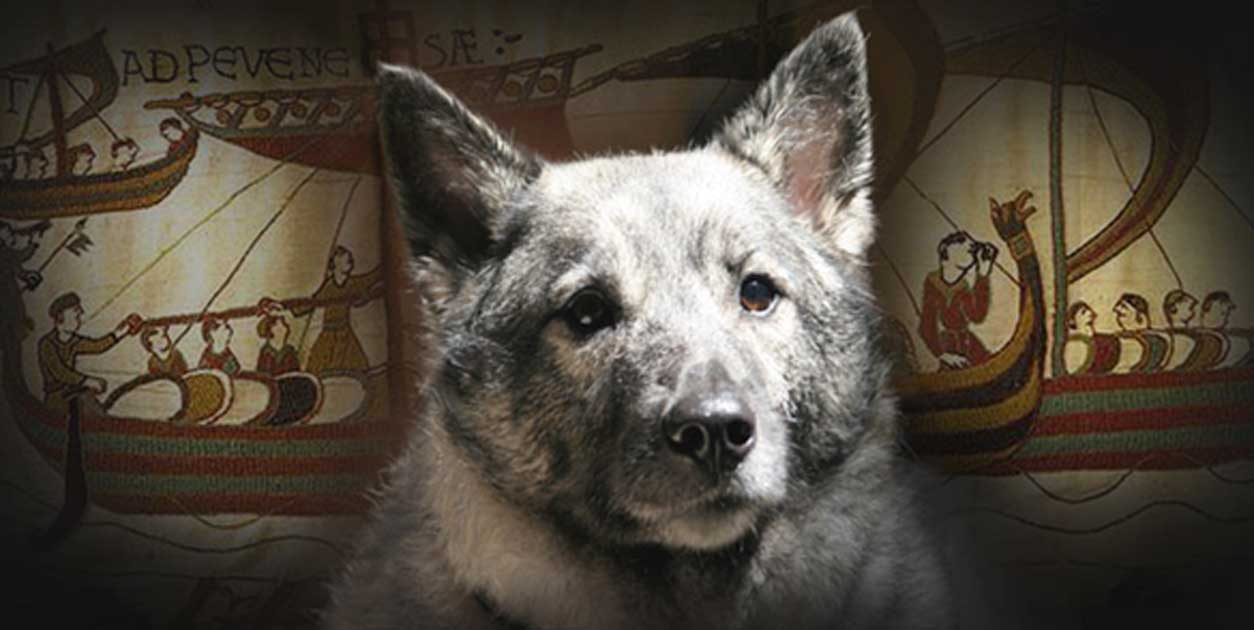Viking Dogs Followed Their Masters to Valhalla
By THORNEWS
Large amounts of animal bones have been found in Viking Age ship graves. For example, there were eight large sighthounds (Old Norse: mjór) buried on both sides outside the ship In the Gokstad burial mound (c. 900 AD). A small lapdog was also buried inside the longship.
Bones from two peacocks, several hawks, and fourteen horses were also excavated.
- A Dog Eat Dog World: The Canine Figurines of Mesoamerican Colima
- New Study Suggests that Man and Dog Have Been Close Friends for 33,000 Years
- Dog Days of Summer: The Rising of the Dog Star, Sirius

‘Viking woman and dog.’ Source: Hans Splinter/CC BY ND 2.0
Sighthounds are large dogs which may resemble Irish Wolfhounds. They were highly valued. By studying the Frostathing law, I have found that even small dogs were valued. Assistant Professor Anne Karin Huftammer, of the Natural History Collections at the Bergen Museum, said if somebody killed such a dog they had to pay a fine equivalent to the price of a thrall (slave). This was said in connection with the investigations of animal bones found back in 2010.

Irish Wolfhound. (Airwolfhound/CC BY SA 2.0)
Animal bones from fourteen or fifteen horses, a cat, a Eurasian woodcock, a red-breasted merganser, a bull, a cow, and four dogs were found in the Osberg ship dated to about 834 AD.
Bronze fittings, which presumably belonged to a dog harness, have been excavated too.
Icelandic Sheepdog
The Vikings brought dogs with them when they colonized Iceland in the 9th century. Today, the breed they brought is known as the Icelandic Sheepdog – it may be one of the oldest dog breeds in the world.

The Icelandic Sheepdog has probably not changed much since the Viking Age. (Photo: Veronica Druk/CC BY SA 3.0)
The Icelandic Sheepdog almost disappeared in the 1950’s, but was rediscovered by Englishman Mark Watson who started systematic breeding.
The dog is strong and robust with a dense, waterproof coat protecting against temperature fluctuations, which is necessary for its survival in the harsh Nordic climate.
The Norwegian Elkhound and Buhund are close relatives.

Norwegian Elkhound by the river. (Public Domain)
On Brattalid (Old Norse: Brattahlíð), Eric the Red’s Farm in Greenland, there are excavated bones from a big long-legged dog; while bones have been found on other farms in the area from a smaller dog breed that could be the Icelandic Sheepdog.
Followed His Master in Afterlife
In the Orkneyinga saga, we can read about a lapdog that the owner brought with him on travels overseas. On their last journey, the owner and his dog were almost burned to death, but the owner managed to escape and took the dog with him.
- A Loyal Companion and Much More: Dogs in Ancient China
- Not Always A Man’s Best Friend: Terrifying Black Dogs of British Legends
- From Mighty Bear Dogs to Breathless Bulldogs: How Human Manipulation Has Changed the Shape of Canines Forever

Saga of the Orkneys manuscript - XIII Century. (Public Domain)
He was pursued and hid under the cover of darkness, but the dog barked and they were discovered and killed.
The story illustrates the close relationship between the Vikings and their dogs.
Archaeological findings and the Viking sagas show that the dog had a high status and value in the Viking Age and that dogs were used for a variety of tasks: Guarding, hunting, fighting, herding – and as sled dogs and companions.
Top Image: Elkhound, a Viking Dog. Credit: Elkhound Love
The article ‘Viking Dogs Followed Their Masters to Valhalla’ was originally published on ThorNews and has been republished with permission.




















Comments
i can't speak for the Vikings, nor any other culture that reveres the dog. all i can say is that if there is an after life, where ever that is, Valhalla, Heaven, Shakaree, or Stovulkor, it does not matter, my beloved best friends better be there. i can say this, my own personal life is a far cry better having had dogs as my best friends, than if i hadn't had them as my bestest buds in the whole world.
riparianfrstlvr